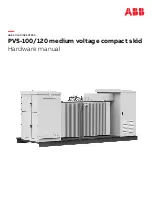
37
What should the torch flame look like?
The torch flame angle can tell you if you are cutting at the correct
speed or not. Take a look at the examples below to help you deter-
mine if you are cutting at the correct speed.
Component Identification and Explanation
FLAME AT SLOW TRAVEL SPEED
TRAVEL
FLAME AT FAST TRAVEL SPEED
TRAVEL
TRAVEL
FLAME AT CORRECT TRAVEL SPEED
How often should I check or change consumables?
Check consumables regularly for wear and change them out before
they are completely worn out. A good practice is to check consuma-
bles before turning the machine on each time you prepare to cut. It
takes only a few seconds and can save yourself a lot of extra effort later.
Allowing the consumables to wear until they quit working may damage
torch related components, creating a more costly repair. If the cut
quality suddenly deteriorates and begins to show greater than 5 de-
grees bevel, stop and check the consumables for wear. Inspect the cut
tip orifice for the tell
-
tale signs of wear including deep pitting around
the orifice and an egg shaped hole. The electrode should be inspected
for wear as well at this time. The cap should be pulled off, along with
the tip and the swirl ring. The tip should be examined for wear. A slight
pit is normal in the center of the electrode. However, if the electrode
tip is pitted around the center, or the center has a deep hole in it, the
tip is worn. The very center of the electrode has a special insert made
of hafnium. Hafnium is an expensive and durable metal that is used for
electrodes. If the hafnium insert is wearing quickly, check for water or
moisture getting into the system. Also, periodically, with the unit
turned off, check the spring action of the electrode by removing the cup
and tip and pushing your thumb or finger down on the electrode. The
electrode should depress slightly and spring back quickly without a
delay. If it does not, the torch head may need to be disassembled,
cleaned and lightly lubricated with di
-
electric grease. In some cases
the sealing O
-
rings may be broken or dirty causing sticking. Replace-
ment torch head kits are available if repair is not an option. Sticking of
the electrode like this causes starting issues. Most often this condition
occurs because of moisture and dirt that makes it way into the system.
Additionally, do not overtighten the electrode or overheat the torch (by
poor cutting techniques such as excessive piercing starts on thick met-
al) or the electrode threads may gall in the torch head and break off
during removal. Do not under tighten it either. Use the supplied
wrench to tighten the electrode. Use your fingers only to tighten with
this wrench. Avoid using pliers to install and remove the consumables.
This usually occurs on lower quality consumables (non
-
OEM) with poor
chrome plating, but can occur if OEM consumables are overtightened.
NOTICE:
When lowering amps to cut thinner material, you must change to small-
er orifice nozzle. Nozzles are offered in different sizes which are made
for different amp levels. See the torch parts page for amp range and
size of consumables. Everlast offers OEM size and configuration of
consumables originally supplied with the torch for replacements and do
not offer all configurations or sizes.
Everlast is not the manufacturer of the Innotec iPT series torches and
does not offer all possible consumable types available for the torch
series. OEM suppliers of the Innotec iPT torches (local and online)
offer extended range of sizes and configurations. If drag cutting is de-
sired, shielded drag consumables are now available from several online
sources. .
An orifice that is too large for the amps being used will result
in arc instability and a rough cut.
Содержание PowerPro 164Si
Страница 46: ...46...










































